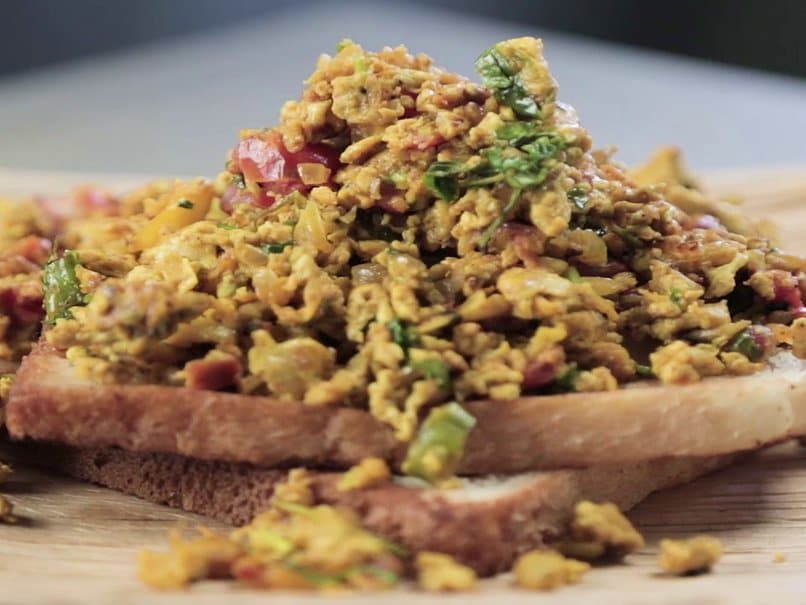Since 2009, the paleo diet has almost become synonymous with the CrossFit method. After all, nutrition is the basis of CrossFit’s developmental hierarchy theory – the CrossFit pyramid – isn’t it?
The official CrossFit nutritional recipe reads: “Eat meat and vegetables, nuts and seeds, some fruit, little starch and no sugar. Keep your intake at levels that support exercise, but not body fat. ”
Sounds a lot like Paleo! But is this the best approach for athletes aiming for high levels of performance?
CrossFit: Theoretical development hierarchy
What is paleo
There are many “variations” on the Paleo Diet depending on the book you read, the podcast you listen to, or the CrossFit gym you go to. The basic requirement is that you eat the way your ancestors of hunters and gatherers would have done.
Here are the basics:
- No grains – quinoa, oatmeal, pasta, bread, granola, couscous, etc.
- No dairy products – milk, yogurt, cheese, butter, etc.
- No refined sugar – high fructose corn syrup, splenda, xylitol, cane sugar, maltodextrin, etc.
- No legumes / beans – peanuts (or peanut butter), black beans, chickpeas, soybeans, tofu, kidney beans, tempeh, edamame, etc.
- No starches – potatoes
- No alcohol
- No “processed foods” – whatever that means … essentially anything that would not have been available to a caveman
As people transitioned from the Paleolithic to the Neolithic, we moved from hunting and food gathering to an agricultural diet.
Some arguments in favor of a Paleolithic diet include: weight management, eating like our ancestors did to optimize your health, beans might be bad for you, and grains cause inflammation.
While we will not delve into these aspects of the Paleolithic diet, it is worth noting that we have a very diverse nutritional world, and that the main reason early people ate a Paleo diet is because it was the only food that they enjoyed was available.
Now that new foods are available, both human and athletic performance have improved. The three main reasons a paleo diet may not be the best approach for CrossFit athletes to improve their performance are:
- Limited choice of carbohydrates
- Difficulty in effectively refueling
- Food restriction approach
1. Carbohydrates are not the enemy
One of the biggest game changers for CrossFitters is changing the mindset when you see yourself not just as someone who exercises, but as an athlete, which is what you are.
The general nutritional advice for those looking to look and feel better is to conserve calories and get more exercise. For most of us, a paleo diet would mean just that, a reduction in calories.
The problem is, that CrossFit is a heavily glycolytic sportThis means that our bodies rely on carbohydrate stores to move weight and accelerate the pace.
A sedentary person who walks out on the paleo diet a few times too many times a week will experience weight loss and improved energy almost instantly simply by eliminating many of those empty excess calories and getting through lean protein, fruits, and more Vegetables replaced.
An athlete who follows a paleo diet and typically eats oatmeal for breakfast and uses rice as a staple for their post-workout meals will likely have difficulty getting enough calories and / or carbohydrates to increase performance and recovery.
In order to reach your maximum potential and recover effectively, carbohydrates are essential.
The Paleo Diet is very limited to carbohydrate choices, making it difficult to achieve a macronutrient distribution that will support high-intensity exercise, as food choices are not made very deliberately.
Some of the highest carb foods allowed on a paleo diet are sweet potatoes and fruits, which really aren’t that dense! This can be particularly problematic for top athletes who train several times a day and have a very high need for calories and carbohydrates.
2. Difficulty in effectively refueling
With several intense training sessions per day, it becomes difficult for athletes to structure their meals. A popular way for CrossFit athletes to meet their caloric needs to recover from a workout is with liquid shakes that contain protein and carbohydrates.
Shakes make sense because liquid calories are much easier to digest than solid foods, and athletes need to recharge and recover quickly to complete multiple workouts.
Simple, quickly digestible carbohydrates like sugar and refined grains, which are banned on the Paleo Diet, are an athlete’s best friend in this scenario.
Additionally, the quickly digestible whey protein is a great addition for top athletes because of its amino acid profile. Since whey protein is made from milk, it is also a veto on the paleo diet.
Can you expend enough energy on fruits, chicken, and sweet potatoes just before and after exercise? Sure, but you will likely feel pretty full for a long time, and no one wants to do thrusters and burpees with a stuffy stomach.
Failure to refuel properly can result in weaker lifts, slower Metcon times, premature fatigue, increased risk of injury and, in chronic cases, RED-S.
3. Food restriction is not the answer, especially for athletes
Aside from recovery, there are some concerns about following a paleo diet long term for your emotional health.
This is a fairly strict diet, and there is some limitation that occurs when following an elimination diet. You have to keep saying “no” to foods that might otherwise fit well in a balanced eating plan, or blaming yourself for enjoying a food that was “off-limits”.
What if you want a piece of birthday cake for your son’s 10th birthday? Or champagne at your best friend’s wedding? A restrictive approach encourages the “on-again-off” or yo-yo diet, which is worse for your performance or health than the cake or champagne itself.
Studies have shown that restrictive diets, or diets that exclude certain foods or food groups, may actually have a lower long-term success rate compared to a calorie-controlled inclusive eating plan. Let’s get rid of the food restriction mindset!

A personalized approach to nutrition
They are unique and should be your nutritional approach too if you are to achieve specific goals.
The Paleo Diet can work if you want to change your approach to eating and need guidelines. However, it can be difficult to hold out over the long term, and it is not the best option if you exercise regularly at high intensity.
Optimal nutrition requires a high degree of individualization. We can talk about research and make general recommendations until we’re blue in the face, but ultimately the “best” diet will be different for each individual.
Your lifestyle, your work, your workouts, your preferences, and even your genetics will determine which approach is best for you.
If you want to change your approach to eating to meet specific goals, a qualified nutritionist is a good place to start. Do not change your diet drastically before consulting a qualified professional.
Personalization meets simplicity in a coach. Optimizing eating habits can feel overwhelming, but this is where it comes down to working one on one with a qualified nutritionist. Learning how to fuel your body is an investment that will pay off over the years.
Emily Wagener is a registered nutritionist and nutrition trainer with Consistency Breeds Growth.
All content in this article is for general information only and should not be treated as a substitute for medical advice from your own doctor or other healthcare professional.
Always consult a nutritionist before making any major changes to your diet.



:format(jpeg):background_color(fff)/https://www.manners.nl/wp-content/uploads/2019/08/Schermafbeelding-2019-08-08-om-10.36.20.png)




/mma.prnewswire.com/media/966505/Global_Widget_Logo.jpg)

